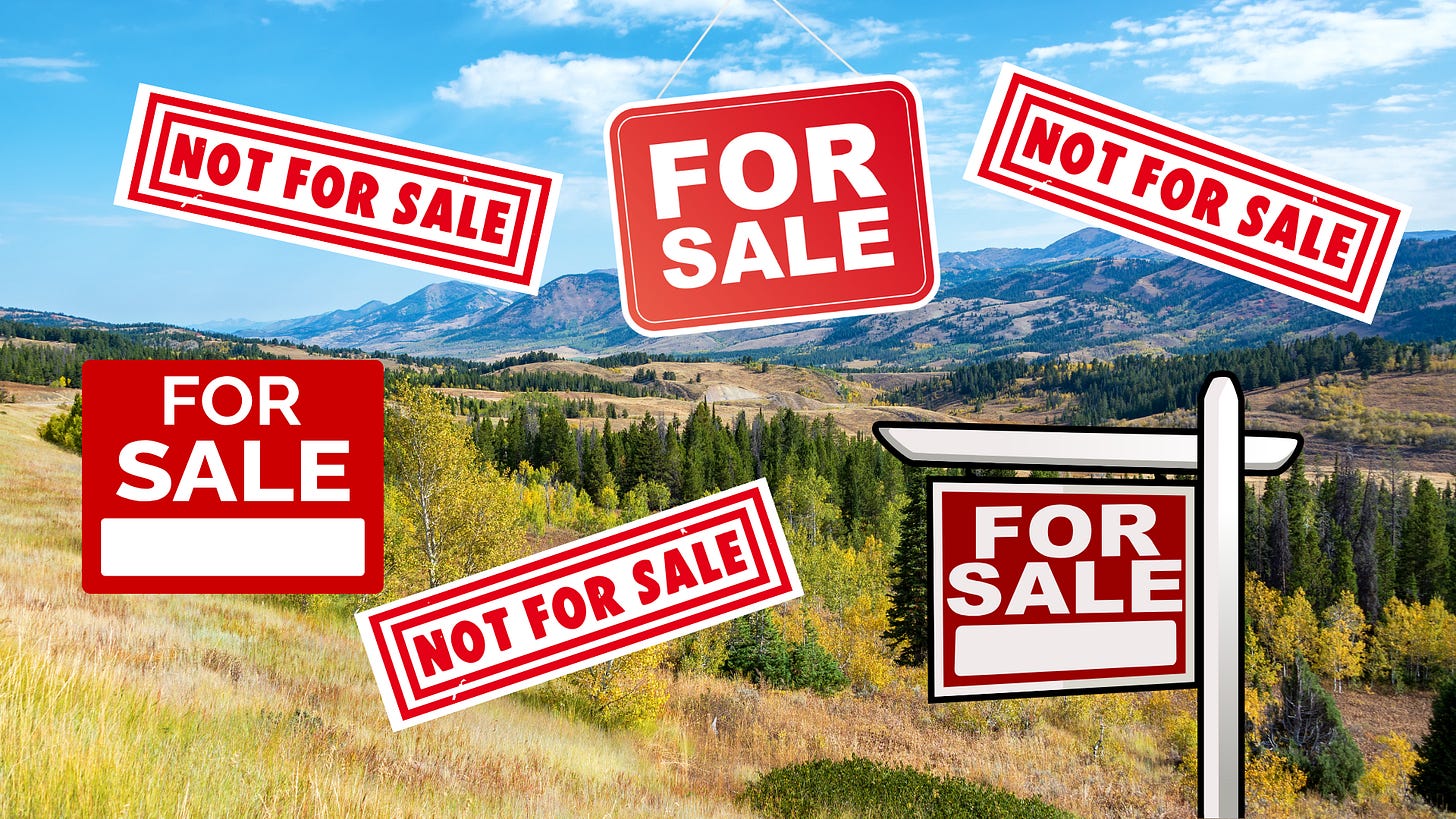Not One Acre: The Public Land Sell-Off Isn’t Dead—It’s Evolving
The Senate parliamentarian blocked public land sales in S/HR1 for now. But the political push for privatization is far from over.
By Grace Kuhn, Digital Director
For weeks, public outrage has mounted over the land disposal language buried in the Senate’s sprawling budget reconciliation bill, S/HR1—a 900-page handout to fossil fuel companies, private developers, and political donors. At the heart of the firestorm: a provision, spearheaded by Senator Mike Lee (R-UT), that would allow the federal government to sell off up to 3+ million acres of public land.
That proposal suffered a blow this week when Senate parliamentarian Elizabeth MacDonough ruled that public lands could not be sold through reconciliation, a budget process designed to fast-track legislation without the usual 60-vote threshold. But the threat is still alive. The land grab isn’t over.
Senator Lee has already vowed to revise and reintroduce the plan. And crucially, Bureau of Land Management (BLM) lands are still in play. Millions of acres—primarily in the West—remain vulnerable to privatization under this administration’s legislative blueprint.
And let’s be clear: these aren’t “wastelands,” as some lawmakers suggest. These are some of the last intact ecosystems in the lower 48. They’re home to wolves, sage grouse, desert tortoises, native trout, beaver, bison, mountain lions and much more. They encompass sacred Indigenous sites, historic trails, popular trailheads that provide access to public lands, and landscapes that sustain climate resilience, biodiversity, and clean water.
Lee and his allies say the land is “unused.” What they mean is: “not yet exploited.”
What the Parliamentarian Ruling Actually Means
The Senate parliamentarian’s ruling was technical in nature. Because reconciliation bills must deal primarily with budgetary issues, provisions that don't have a direct impact on federal revenue or spending often get tossed out. The decision to exclude Forest Service land sales from S/HR1 rests on that basis.
But that ruling did not block the disposal of BLM lands. That part of the proposal—thinly framed as “housing-related”—is still eligible unless stripped by lawmakers themselves.
In response to the backlash, Lee has floated changes: removing Forest Service lands, reducing the acreage, and limiting sales to parcels near population centers. He’s also rebranded the plan with Orwellian flair, calling the lands up for disposal, “FREEDOM ZONES” that would supposedly benefit American families. But the motive remains the same—a federally sanctioned transfer of public lands to private hands, cloaked in anti-government rhetoric and real estate jargon.
A Familiar Pattern, A Deeper Agenda
This is not an isolated bad idea from one senator. It’s part of a much longer campaign to erode public control of the American West.
Lee has long advocated “returning” federal lands to states—a policy that would all but guarantee privatization, since most Western states lack the budgets or legal mechanisms to manage them.
But the truth is, these lands were never owned by the states to begin with. When states like Utah, Nevada, and Idaho entered the Union, they explicitly renounced any claim to unappropriated federal lands in their enabling acts. In exchange, they received other lands and support—part of a constitutional compact that recognized federal ownership as legitimate and permanent.
Lee’s proposal echoes the Sagebrush Rebellion of the 1970s, and the more violent standoff politics of the Bundy clan, who argued that federal lands should be up for grabs for ranchers, miners, and “patriot” militias. Now those same arguments—disproven in court and rejected by the American public—are being revived and laundered through official Senate channels.
Make no mistake: this is a corporate land grab, enabled by ideological hostility to public ownership and ecological regulation. It has nothing to do with housing, and everything to do with dismantling the very idea of land held in trust for the people.
BLM Lands Are the Backbone of the Public Domain
While National Parks and Wilderness areas get most of the attention, BLM lands are where the fight is. These lands make up the largest share of public acreage in the West. They’re where decisions about grazing, oil and gas leasing, hardrock mining, and wildlife management are made. They’re also where WWP and our allies have fought for years to protect riparian corridors, restore native vegetation, remove livestock from degraded streams, and give wildlife a fighting chance.
If this proposal goes through, it would set a precedent that public lands can be monetized and sold off to balance budgets or grease political skids. It would encourage more members of Congress to frame public land as a commodity, not a commons.
Why We Must Keep the Pressure On
The only reason this proposal has been slowed is because people—including conservative hunters, tribal leaders, scientists, and rural communities—raised hell. It wasn’t just conservation groups or progressive lawmakers. It was a cross-section of Americans who understand that once public land is sold, it’s gone forever.
That’s why we can’t let up. Not now. Not when Lee is already reworking the plan. Not when the BLM piece remains live. Not while this administration continues to strip environmental safeguards under the cover of reconciliation.
We’re urging Congress to:
Strip all public land disposal language from S/HR1
Reject any future proposal that authorizes land sales—no matter the size, location, or stated intent
Defend the integrity of federal land protections, especially under reconciliation
Because if they can sell 1%, they can sell 10%. And if we let this slide, it won’t stop with “checkerboard parcels” or “surplus tracts.”
They’re testing how much outrage they can weather. Let’s give them their answer.






NOW IS NO TIME TO LET UP!!
Senator Thine said he wouldn't override the Parliamentarian's ruling. We'll see if he keeps his word.